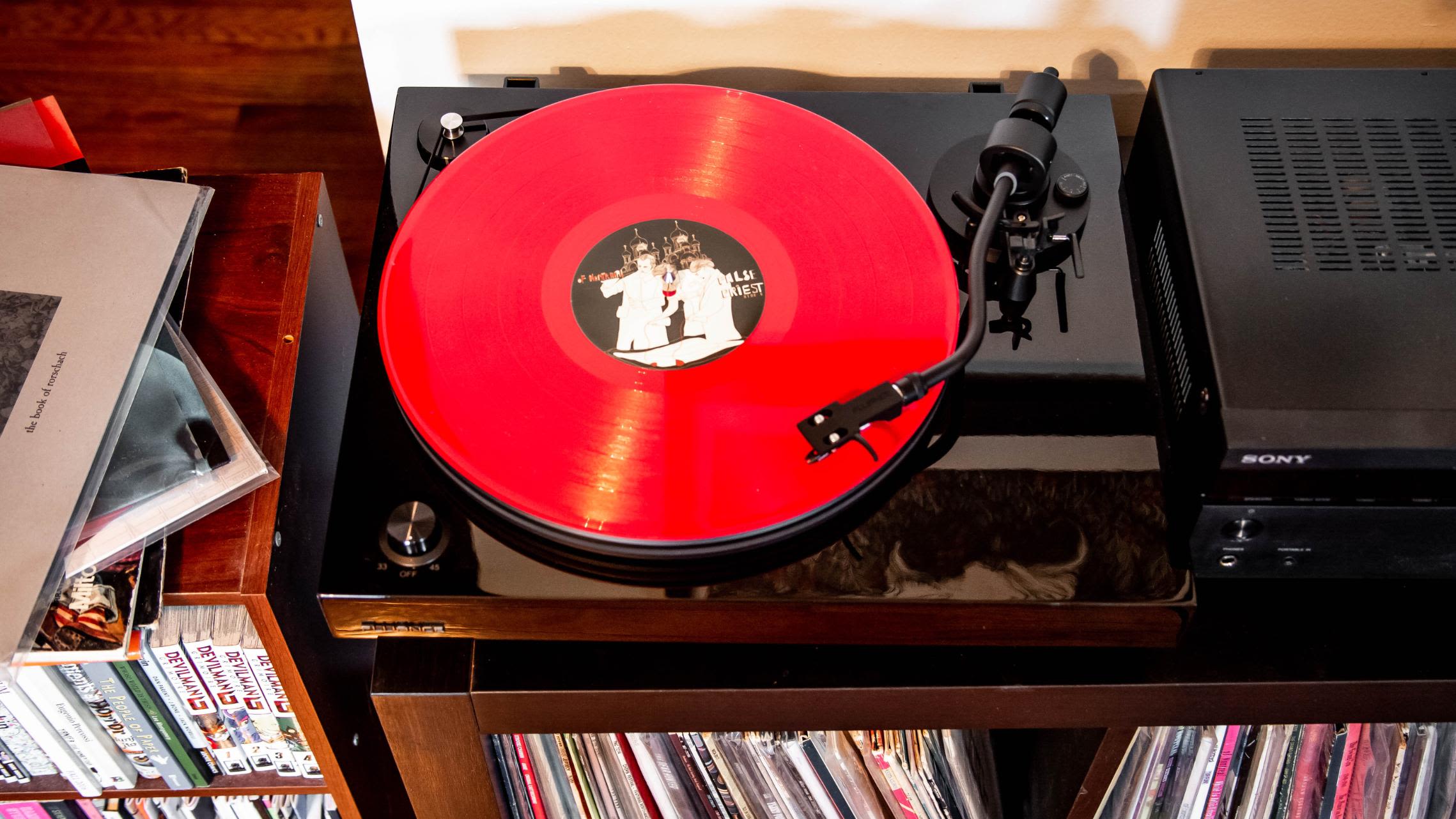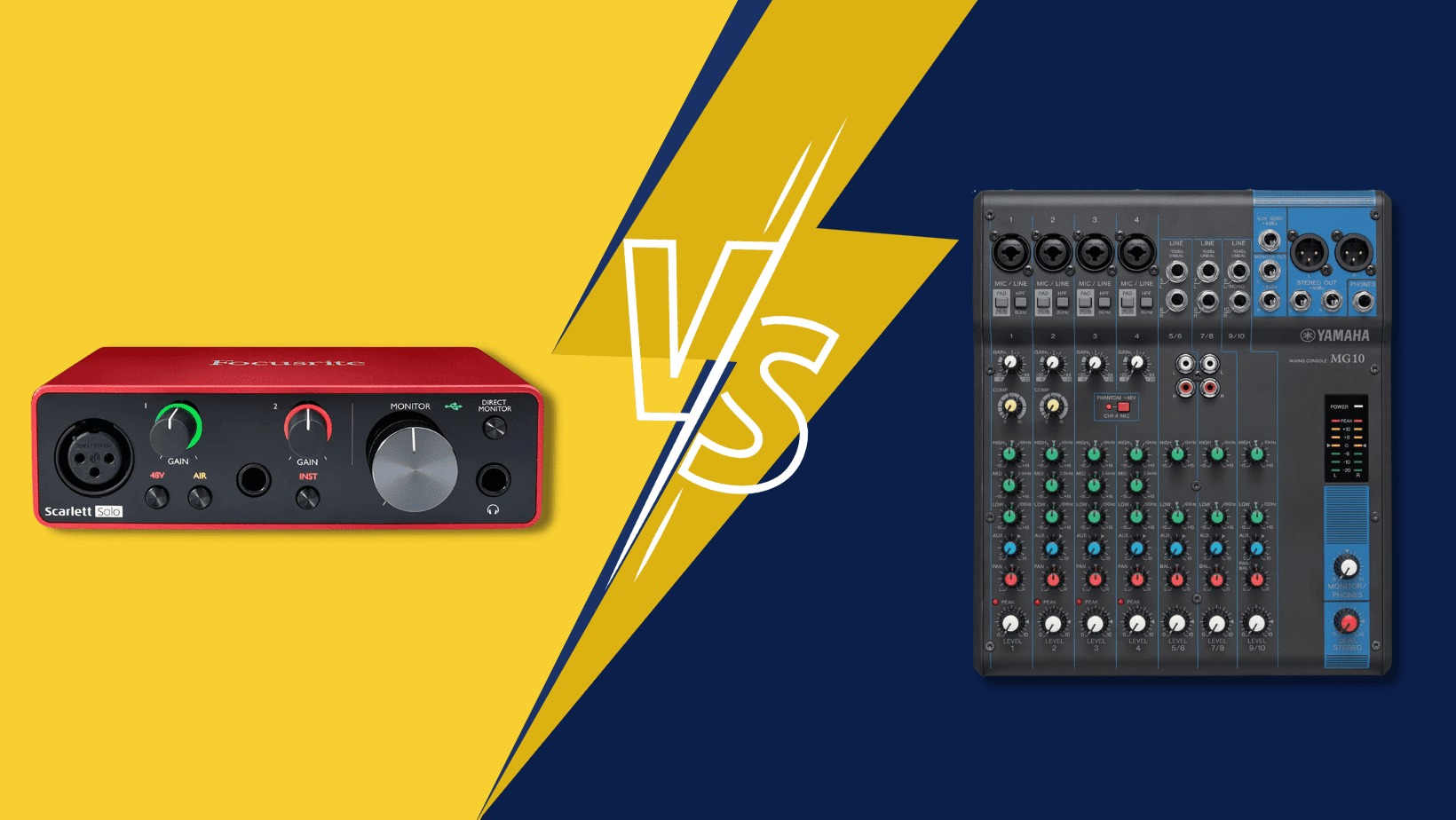Home>Instruments>Bass>What Is The Difference Between A Cello And A Bass


Bass
What Is The Difference Between A Cello And A Bass
Modified: January 22, 2024
Discover the main distinctions between a cello and a bass instrument. Dive into the unique characteristics and roles that a bass plays in music.
(Many of the links in this article redirect to a specific reviewed product. Your purchase of these products through affiliate links helps to generate commission for AudioLover.com, at no extra cost. Learn more)
Table of Contents
Introduction
When it comes to musical instruments, there is a vast array of options available, each with its own unique sound and characteristics. Two instruments that often get confused are the cello and the bass. While they may belong to the same family of string instruments, there are distinct differences that set them apart.
The cello, also known as the violoncello, stands out as one of the most versatile and emotive instruments in the orchestra. With its rich, deep tones, it has captured the hearts of musicians and audiences alike for centuries. On the other hand, the bass, or double bass, is the largest and lowest-pitched instrument in the string family. It provides a strong foundation for rhythm and harmony in many genres of music.
With their similar appearances and shared family heritage, it’s easy to understand why people confuse the cello and the bass. However, by examining their histories, construction, techniques, and musical applications, we can gain a deeper understanding of the unique qualities that make each instrument distinct.
In this article, we will delve into the fascinating world of cellos and basses, exploring their differences and unique roles in the world of music. Whether you are a musician, a music lover, or simply curious about these instruments, this article will shed light on the intricacies and nuances of the cello and bass.
History
The cello and the bass have both traversed a long and illustrious history, evolving over centuries to become the instruments we know today.
The origins of the cello can be traced back to the early 16th century in Italy. It is believed to have evolved from smaller instruments such as the viola da gamba. The design of the cello as we know it began to take shape in the 17th century with modifications to improve its sound and playability. It quickly gained popularity and became a staple in chamber music and orchestras.
On the other hand, the bass can be traced back even further, with its ancestor being the viola da gamba. The bass as we know it today emerged in the 16th century, undergoing significant changes in its construction and size throughout history. Originally, the bass was played while seated or rested on the player’s knee, but later it evolved to be played standing upright on the floor. The instrument found its place in various genres, including classical, jazz, and popular music.
In the 18th and 19th centuries, both the cello and the bass saw further developments in construction and technique. The cello gained prominence as a solo instrument, with composers like Beethoven and Bach writing works specifically for it. Meanwhile, the bass continued to provide the foundation for ensembles and orchestras.
As music styles evolved in the 20th century, the cello and the bass found their places in a wide range of genres, including classical, jazz, rock, and even experimental music. Today, they continue to be essential instruments in orchestras, chamber ensembles, and bands.
Overall, the cello and the bass have rich and intertwined histories, each contributing to the development of music in its own way. Understanding their historical context and evolution is crucial in appreciating the unique roles they play in contemporary music.
Construction
The construction of the cello and the bass differs in several key aspects, including their size, shape, and materials used.
The cello typically ranges between 4 to 4.5 feet in length, with a curved body made of wood. The top, or soundboard, is usually made of spruce, while the back and sides are constructed from maple. The cello has an elegant and distinctive figure-eight shape with f-shaped soundholes on the top. It also features four strings, usually tuned to C-G-D-A, which are attached to the tailpiece at the bottom and secured by pegs at the scroll on the top.
The bass, on the other hand, is considerably larger than the cello. It can reach heights of 6 feet or more, making it the largest instrument in the string family. Like the cello, the bass has a wooden body, but it is more elongated and has a deeper resonance. The top, back, and sides of the bass are also typically made of spruce and maple. The bass features f-shaped soundholes as well, although they are usually larger and wider than those of the cello. It is equipped with four strings, normally tuned to E-A-D-G, and has a tailpiece and scroll similar to the cello.
The construction of both instruments involves meticulous craftsmanship to ensure optimal sound quality and playability. Factors such as wood selection, thickness, and varnish application all contribute to the instrument’s tone and resonance. The positioning and shaping of the soundholes are crucial in creating a balanced and vibrant sound.
In addition to the body, the cello and the bass also have other components that contribute to their construction. They both have a fingerboard where the player presses down on the strings to create different pitches. The bridge, located between the strings and the body, helps transmit the vibrations to the body, amplifying the sound. Lastly, the cello and bass both utilize a bow, traditionally made of horsehair and attached to a wooden stick, which is used to create sound by drawing across the strings.
Overall, the construction of the cello and the bass showcases the intricate craftsmanship and attention to detail required to create these magnificent instruments. From the selection of woods to the fine-tuning of the voice of the instrument, every element plays a vital role in producing the desired sound and tone.
Size and Shape
When comparing the size and shape of the cello and the bass, it becomes apparent that these instruments differ significantly in terms of their dimensions and overall proportions.
The cello is known for its standard size, which typically ranges from 4 to 4.5 feet in length. It has a graceful and shapely figure-eight form, with gentle curves throughout its body. The waist of the cello, the narrowest point between the upper and lower bouts, allows for comfortable and ergonomic playing. The neck of the cello extends from the body and leads to the scroll, providing a connection point for the strings and the player’s hand. This compact yet elegant design makes the cello a versatile instrument that can be played while seated or standing.
On the other hand, the bass is considerably larger and more imposing in size. It often stands at a height of 6 feet or more, making it the largest instrument among the strings. The bass features a distinctive, elongated shape and a wide upper bout. The body of the bass has a more pronounced and bulbous form compared to the cello, providing ample space for the resonating chamber, which contributes to its deep and resonant sound. Due to its size, the bass is typically played while standing, with the player using a strap or an endpin to support its weight.
While the cello and bass differ in size and shape, it’s worth noting that variations do exist within these instrument families. For instance, there are smaller cellos, such as the 7/8 and 3/4 sizes, which are designed for younger or smaller players. Similarly, the bass comes in different sizes, including the 3/4 and 1/2 sizes, to accommodate musicians of varying heights and arm lengths.
Overall, the size and shape of the cello and the bass play a significant role in determining the instruments’ sound projection, ergonomics, and playing style. Whether it’s the compact and versatile form of the cello or the grand and imposing presence of the bass, both instruments offer their own unique visual appeal and tonal characteristics.
Strings
The strings of the cello and the bass are essential components that directly influence the sound and playability of these instruments. Both instruments feature four strings, but there are notable differences in terms of their materials, thickness, and tuning.
Cello strings are typically made from either gut, steel, synthetic, or a combination of these materials. Gut strings, which were historically the most commonly used, provide a warm and rich tone but require careful maintenance due to their sensitivity to temperature and humidity changes. Steel strings offer a brighter and more powerful sound, making them popular among contemporary cellists. Synthetic strings, such as those made from nylon or perlon, provide a balance between the warmth of gut strings and the stability of steel strings. Modern cello strings often combine different materials to achieve a desired tone and response.
In terms of thickness, the cello strings progressively increase in thickness from the A string (the highest-pitched string) to the C string (the lowest-pitched string). This variation in thickness allows for a balanced and even tone across the instrument’s range. The tuning of the cello strings, from highest to lowest, is typically C-G-D-A. However, there can be variations in tuning depending on the musical piece or personal preference of the cellist.
On the other hand, bass strings are generally made of steel core with various winding materials, such as steel, nickel, or synthetic materials. They are much thicker and heavier compared to cello strings. The thickness and tension of the strings contribute to the bass’s deep and resonant sound. The tuning for the bass strings, from highest to lowest, is typically E-A-D-G, one octave below the cello’s tuning. The low pitch and thickness of bass strings require stronger finger pressure to produce clear and defined notes.
It is worth noting that bass strings come in different styles, such as orchestral, jazz, and hybrid, each designed to cater to different musical styles and playing techniques. Orchestral strings prioritize a focused and clear sound suitable for classical music, while jazz strings offer a more expressive and versatile sound for improvisation. Hybrid strings provide a blend of characteristics from both orchestral and jazz strings for a balanced tone suitable for various genres.
Strings play a vital role in shaping the character and tonal qualities of the cello and the bass. The choice of strings, whether it’s the material, thickness, or winding, allows musicians to personalize and tailor the instrument’s sound to their preferences and musical style.
Playing Technique
Playing the cello and the bass involves distinct techniques and approaches that allow musicians to produce the desired sound and expression from these instruments.
Cellists typically play the cello while seated, with the instrument positioned between their legs. The player uses their left hand to press the strings against the fingerboard, creating different pitches and notes. This technique, known as fingering or stopping, requires precision and control to produce accurate intonation. The right hand, equipped with a bow, is responsible for creating sound by drawing the bow across the strings. Cellists can achieve a variety of bowing techniques, such as long bow strokes, spiccato (short bouncing bow strokes), and pizzicato (plucking the strings with the fingers), to create different articulations and textures in their playing.
The bass, being larger and played while standing, requires a different approach. Bassists often use a combination of plucking the strings with their fingers, known as pizzicato, and bowing to produce sound. Pizzicato is frequently used in jazz and popular music genres, allowing for a percussive and rhythmic quality. For bowed playing, bassists use a similar technique to cellists, drawing the bow across the strings. However, due to the size of the bass and the thickness of the strings, it requires more strength and control to achieve the desired sound and sustain. Bassists also utilize techniques like double-stops (playing two strings simultaneously), harmonics (producing high-pitched tones by lightly touching the string), and glissando (sliding the finger along the string) to expand the range of expression.
Both the cello and the bass require a strong foundation in technique, including proper posture, hand positioning, and bow control. Developing a solid technique enables musicians to navigate the instrument’s range comfortably and execute musical passages with clarity and precision.
Furthermore, playing technique extends beyond the basic mechanics of producing sound. Artists also incorporate their own musical interpretation and expression, utilizing dynamics, vibrato, and phrasing to convey emotions and tell a story through their playing. These expressive elements bring the music to life and differentiate one musician’s performance from another.
Lastly, it is important to note that techniques can vary across different music genres. While classical music has established conventions and techniques, genres like jazz and popular music allow for more improvisation and flexibility in approach. Musicians adapt their playing style accordingly to suit the demands and nuances of the music they are performing.
In summary, the playing techniques of the cello and the bass involve a combination of finger positioning, bowing, and expressive elements to produce the desired sound and convey musical expression. Mastering these techniques requires practice, discipline, and a deep understanding of the instruments’ unique challenges and capabilities.
Sound and Tone
The cello and the bass produce distinct sounds and tones that contribute to their unique roles and characteristics within the musical landscape.
The cello is renowned for its warm, rich, and expressive sound. Its tonal range spans from deep and resonant low notes to soaring and lyrical high notes. The combination of its wooden construction, size, and strings contributes to the cello’s unique tonal qualities. The spruce soundboard resonates and amplifies the strings’ vibrations, resulting in a full-bodied and resonant sound. The strings, whether made of gut or synthetic materials, add to the cello’s warm and nuanced tone, allowing for expressive dynamics and a wide range of musical expression. Cellists can achieve a smooth and singing quality in their playing, making the cello an instrument capable of conveying profound emotions and storytelling.
The bass, being the lowest-pitched instrument in the string family, produces a deep and sonorous sound. Its large size and thick strings contribute to its rich and resonant tone. The low frequencies produced by the bass provide a solid foundation and support for the harmony and rhythm in various musical genres. Whether in a symphony orchestra or a jazz ensemble, the bass adds depth and richness to the overall sound. Bassists can create a range of timbres and articulations, from a smooth and velvety tone to a percussive and plucky sound, depending on the playing technique and musical style.
While the cello and the bass have distinct tonal characteristics, it is important to note that the sound produced by these instruments can be greatly influenced by the player’s technique and interpretation. The way a cellist or bassist bows the strings, applies pressure on the fingerboard, and controls dynamics can shape the instrument’s sound and bring out its unique qualities. Furthermore, the choice of strings and setup of the instrument can also have an impact on the tonal characteristics.
Both the cello and the bass have the ability to blend with other instruments in an ensemble or stand out as solo instruments. The cello’s warm and expressive sound makes it an ideal choice for melodic lines and expressive solos, whether in classical, jazz, or contemporary genres. Meanwhile, the bass provides a steady and solid foundation, anchoring the harmonies and rhythms of a musical piece. Its deep, resonant, and supportive sound can be found in orchestral compositions, jazz ensembles, and popular music genres.
Ultimately, the sound and tone of the cello and the bass are what give these instruments their unique identities and enable them to evoke a wide range of emotions and musical expressions.
Musical Styles
The cello and the bass are versatile instruments that find their place in a wide array of musical styles and genres. Here are some of the genres where these instruments play a prominent role:
Classical Music: The cello holds a vital role in classical music, both as a solo instrument and as a part of chamber ensembles and orchestras. From the passionate and soaring melodies of composers like Bach and Dvorak to the rich and melancholic tones of the Romantic era, the cello adds depth, emotion, and expressiveness to classical compositions. The bass, with its deep and resonant sound, provides a solid foundation for the orchestra, reinforcing the harmony and rhythm.
Jazz: In jazz music, both the cello and the bass play important roles. The cello, although not as common as the bass in jazz, has been utilized by innovative musicians to add a unique melodic and harmonic voice to the genre. The bass, on the other hand, is a fundamental component of jazz ensembles, providing the rhythmic pulse, walking bass lines, and improvisational support for the other instruments.
Latin and World Music: The cello, with its warm and expressive sound, has found its way into various styles of Latin and world music. It adds richness and depth to genres like tango, flamenco, and bossa nova. The bass, with its deep and resonant tones, drives the rhythmic foundation and provides the pulsating grooves in Latin and world music styles.
Rock and Pop Music: While not as common as guitars or keyboards, the cello and the bass have also found their place in rock and pop music. Their versatile sounds can add texture, depth, and emotional impact to songs. The cello, with its expressive capabilities, can provide haunting melodies or lush harmonies. The bass, with its deep and driving tones, anchors the rhythm section and brings a strong foundation to rock and pop compositions.
Contemporary and Experimental Music: Both the cello and the bass have also extended their roles into contemporary and experimental music. Musicians often push the boundaries of these instruments, exploring unconventional techniques, extended playing methods, and electronic effects to create unique and innovative sounds. The cello and bass can be found in avant-garde compositions, soundtracks, and experimental ensembles.
The adaptability of the cello and the bass to various musical genres showcases their versatility and ability to enhance and contribute to different musical styles. Whether it’s the expressive melodies of classical music, the driving rhythms of jazz, or the experimental sounds of contemporary compositions, these instruments continue to captivate listeners and add depth to the musical landscape.
Similarities and Differences
While the cello and the bass belong to the same family of string instruments, they have both similarities and differences that set them apart.
One of the main similarities between the cello and the bass lies in their construction and basic playing technique. Both instruments have a wooden body, typically made of spruce for the soundboard and maple for the back and sides. They also feature f-shaped soundholes and a tailpiece with strings attached. In terms of playing technique, both instruments can be played with a bow or plucked with the fingers, although the specifics of technique and approach differ.
However, there are significant differences that distinguish the cello and the bass. The most obvious difference is in their size and range. The cello is smaller, typically ranging from 4 to 4.5 feet in length, while the bass is much larger, often exceeding 6 feet in height. This size difference contributes to the diverse tonal range of each instrument, with the cello producing higher-pitched and more expressive tones, and the bass offering deeper and more resonant low notes.
Another notable distinction lies in their tuning and string setup. The cello, typically tuned to C-G-D-A, has strings that vary in thickness and are usually made of materials such as gut, steel, or synthetic materials. On the other hand, the bass is tuned to E-A-D-G, one octave below the cello’s tuning, and has thicker steel core strings with various winding materials. This difference in tuning and string setup contributes to the distinctive sound and playing techniques utilized for each instrument.
Additionally, the playing technique for each instrument also varies. Cellists predominantly play the cello while seated, with the instrument between their legs. They use their left hand to press the strings against the fingerboard and their right hand to bow or pluck the strings. On the other hand, bass players often stand while playing, supporting the large instrument with a strap or a floor peg. They use a combination of plucking and bowing to produce sound, with a focus on providing a solid rhythmic foundation in ensemble settings.
Overall, the cello and the bass share similarities in terms of construction and being part of the same string instrument family. However, their differences in size, range, tuning, string setup, and playing technique make each instrument unique and well-suited for different musical roles and genres.
Conclusion
The cello and the bass are two captivating instruments that share a common heritage in the world of stringed instruments. While they have similarities in their construction and belonging to the same family, they each have their own distinct characteristics that make them unique.
The cello, with its elegant figure-eight shape and warm, expressive sound, has captured the hearts of musicians and audiences for centuries. Its versatility allows it to shine as a solo instrument and play a prominent role in classical compositions, jazz ensembles, and various genres of music.
On the other hand, the bass, with its large size and deep, resonant tones, provides a solid foundation and rhythmic support in orchestras, ensembles, and contemporary genres. Its role in jazz and popular music, where its rich sound adds depth to harmonies and drives the groove, cannot be overlooked.
Both instruments require skillful technique, a strong command of musical expression, and a deep understanding of their nuanced characteristics. The cello demands precision and control to navigate its range and express emotions through its melodic lines. The bass requires strength and finesse to produce clear and defined notes, holding the harmonic and rhythmic foundation with precision.
Whether it’s the lush melodies of the cello or the deep, resonating grooves of the bass, these instruments have left an indelible mark on the world of music. Their unique qualities allow them to take on diverse roles in classical music, jazz, rock, pop, Latin, and beyond.
In conclusion, the cello and the bass are instruments that possess their own distinct charm, offering a wide range of musical possibilities in different genres and settings. From the sentimental melodies of the cello to the powerful rhythms of the bass, both instruments continue to captivate audiences and enrich the world of music with their soul-stirring presence.











